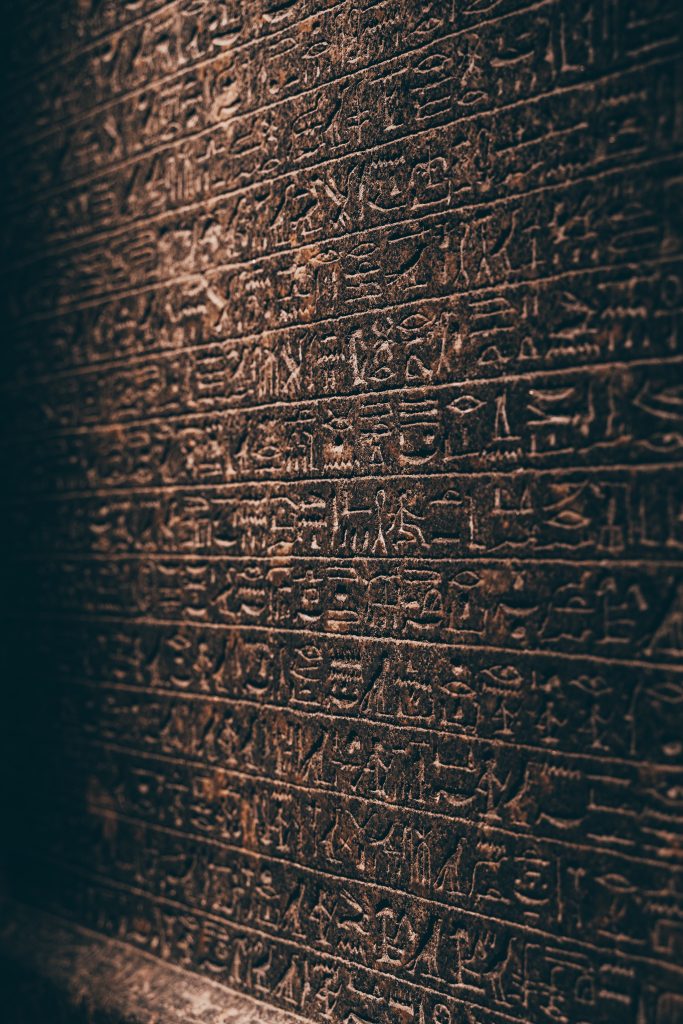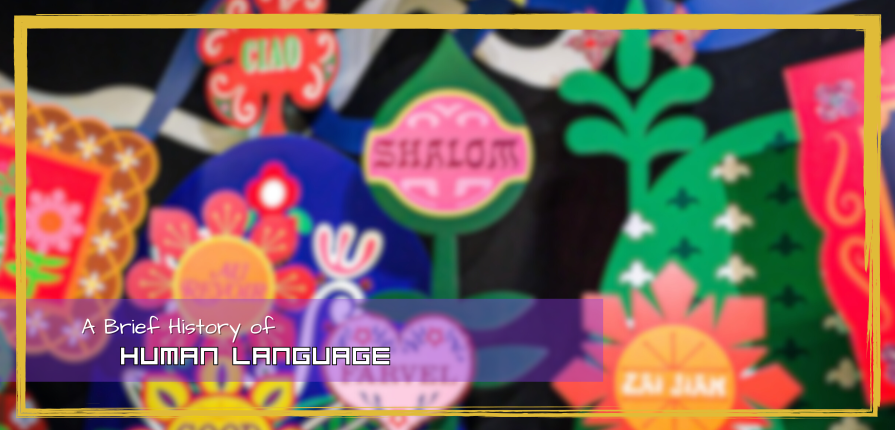Have you ever wondered about how language came to exist? Or how were different languages formed?
Exploring the fascinating aspects of human language, including its history, makes us adore our jobs as translators.
An origin myth about languages
Do you know the story about the Tower of Babel? It is said that once there was a race of humans that spoke the same language. And they attempted to build a tower so high that it would reach the sky. Such ambition was soon subdued as the Lord baffled them by confusing “the language of all the earth”. The Lord scattered the humans all over the green before they could finish the Tower of Babel.
This tale told in the Hebrew Bible served as an origin myth to explain how different languages came into existence. It sounds convincing enough—poetical even—if we think about how men always aim for the sky.
However, if you want an origin that is more grounded, read further in this article.
To fully understand how languages came to be would take a person his whole life. And it would still not suffice. Many experts spent a great many years researching the subject, and every day there are still new facts discovered. It is okay to feel a little overwhelmed when we first start on the journey to learn more about language. It is even better if we can get a little head start.
VINALOCALIZE would like to be your companion on today’s journey to explore a brief history of languages.
A walk among the history
Prehistoric Language
Now, let’s explore the ancient developments in language by traveling back to prehistoric times. Back then, before the existence of written records and modern languages, people communicated in fascinating ways, which set the stage for the rich diversity of languages we have today.
During this prehistoric period, which predated recorded history, which language was the earliest one to have appeared is still a mystery. Communication at this time was primarily oral, involving gestures and simple sounds. As early humans journeyed across the world, they gave rise to a variety of languages.
While we can’t determine the exact number of languages from that era, we do know that many originated in significant cradles of civilization like Mesopotamia, the Indus Valley, and the Nile Valley. These ancient languages formed the basis for the diverse linguistic landscape we have today.
Ancient Language
The emergence of ancient languages marked a pivotal moment in human civilization. Cuneiform, one of the earliest known scripts, originated in Mesopotamia around 3200 BCE. This wedge-shaped script represented the earliest recorded form of written communication. It offers a window into the intellectual world of ancient Mesopotamia.
Meanwhile, the Indus script, left undeciphered by the Indus Valley Civilization, hints at a complex communication system of that era.
In the Nile Valley, the grandeur of hieroglyphics adorned the walls of ancient Egypt as early as 3200 BCE. These intricate symbols conveyed the stories, beliefs, and culture of a civilization that had flourished along the banks of the Nile for centuries.

These ancient scripts laid the foundation for early written languages. In addition, they offered insights into the intellectual and cultural achievements of those societies.
Modern Language
The evolution of languages from ancient times to the present has given rise to a rich tapestry of modern languages. In the wake of ancient scripts and civilizations, a multitude of languages flourished.
Latin, the language of the Roman Empire, spread across Europe and evolved into the Romance languages like French, Spanish, and Italian. Meanwhile, English, a Germanic language enriched with Latin and Old Norse influences, became a global common language.
In the East, Mandarin Chinese is the world’s most spoken language by number of speakers. Arabic extends its influence throughout the Middle East and North Africa, and Russian spans the vast Eurasian region with its Cyrillic alphabet.
Today, our world has more than 7,000 languages, representing human culture, history, and diversity. These languages bridge gaps for understanding and connection in our globalized society, where linguistic diversity keeps evolving.
Language Families
Language families group related languages based on shared ancestry and history. Here are some prominent language families and their most spoken representative languages:
- Indo-European: This language family includes languages like English, Spanish, and Hindi, with English being the most widely spoken language within this family.
- Sino-Tibetan: Mandarin Chinese, the most spoken language globally, is a member of this language family with over a billion native speakers. This family also encompasses Tibetan and various other languages in East and Southeast Asia.
- Afroasiatic: Arabic, a language with cultural and historical significance, is a key representative of this family, with millions of native speakers across the Middle East and North Africa.
- Niger-Congo: Swahili, widely spoken in East Africa, is a notable language in this family and serves as one of the official languages of the African Union.
- Austronesian: Indonesian, spoken in Indonesia, is a significant language within this family, with millions of speakers.
These language families reflect the diverse linguistic heritage of our world, contributing to the cultural and historical tapestry of each region.
To sum it up
Our journey through the brief history of human language reveals the remarkable evolution of human communication. From the enigmatic origins of prehistoric languages to the intricacies of modern tongues, languages have been vessels for culture, history, and human connections.
At VINALOCALIZE, we understand the critical role of languages in today’s globalized world. Whether you’re reaching a global audience or navigating the complexities of multilingual communication, VINALOCALIZE is your dedicated partner for seamless and effective language solutions.
Connect with us today to unlock the potential of international communication and expansion.



